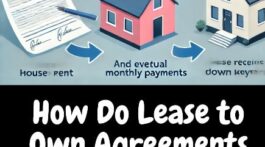Getting a Home’s Square Footage Calculations Correct
One thing that is likely to catch your eye when looking at real estate listings is the square footage. This will show you how much space you would have if you bought the home and gives you another way to compare it to other properties.
Knowing how to measure square feet properly is a key aspect when purchasing a home. If the calculation of square footage is off for a home, it can impact the market value. It is important to look at the source to gauge the reliability.
If the home’s square footage is being provided by the seller rather than a source such as the blueprints, the city, or an appraiser, it is more likely to be incorrect. Home sellers can be notorious for over exaggerating the size of their homes.
The size of a home is always an interesting topic to cover. Let’s look at some of the essential considerations for a homes size and calculating it properly.
What is the Average Size Home?
While tiny homes have been trending, the average size of homes has actually continued to rise. Back in 1973, the average American lived in a 1,525 square feet home. Today, the average size has grown by around 1,000 square feet to nearly 2,500. This is obviously a significant increase that amounts to 60% larger homes compared to the early 70s.
Despite this increase, the average home size will depend on your market. The cost per square foot will also vary greatly depending on your location, with prices in certain places, like New York, being very different from the rest of the country.
But how is sq ft calculated? Let’s take a look:
How is Square Footage Calculated?
An easy starting point for how to measure in square feet is to draw a rough floor plan of the interior of the home. You can then measure the rooms’ dimensions, adding them to your floor plan.
To get the square footage, it is simply a case of multiplying the rooms’ length and width. However, this isn’t as easy if your rooms are not square or rectangular.
Any alcoves or cupboards can be treated as small rooms and added to the total for the room they are part of. To calculate more difficult spaces, online calculators can help find the square footage of more complicated-shaped rooms.
What is Livable Square Footage?
When you measure the square footage of your home, not all of it will be considered livable. The gross living area, or GLA, is a way of defining the parts of the home you can actually live in. This would include the main living areas of the home but not rooms like basements or garages.
Another way to look at it is only rooms that are connected to the same heating and cooling systems. This means areas like stairwells and bathrooms would be included in the total livable area of the home. But the total wouldn’t include sheds, pool houses, guestrooms, and storage areas.
These parts of the home normally require you to leave the main house for access, and that is another reason why they are omitted.
Using Different Measuring Criteria For Size
Different methods are used to find the square footage of a home, so different people could get different results. This makes answering the question of how is square footage calculated more difficult.
Many use the American National Standards Institute (ANSI) guidelines, which use a total of the finished square footage of each level in the home. This is measured to the outside wall of the single-family home or uses the center lines between buildings.
When you see livable square footage detailed in the Multiple Listing Service, they will not be including outbuildings, garages, or other spaces that the homeowner wouldn’t live in. It is essential to measure a home like an appraiser will do it.
By over exaggerating a home’s square footage, you can easily find yourself with an appraisal gap. Without an appraisal contingency in your real estate contract, you could find yourself losing the earnest money deposit.
Some buyers will waive the appraisal contingency to make their offer more appealing.
Using an Appraiser to Accurately Measure the Square Footage
If you want an accurate measurement of the square footage in your home, you could always hire an appraiser. The different methods of assessing the square footage of a home can get slightly confusing, and using a professional will make sure you get an accurate measurement.
Accurately measuring the square footage of a home is particularly important when the home is for sale. If the measurements are found to be incorrect, it could jeopardize the sale. Buyers often base their purchase decisions on a particular size home. If they feel they have been deceived about the size, they could back out of the sale.
Sometimes buyers also use price per square foot to justify their offer. Doing so, is a terribly inaccurate way to put a value on a home. Even more so when the square foot measurement is wrong.
Checking Tax Records in Usually Helpful For Accurate Square Feet
You can also check the tax records for the square footage of a home. However, there’s a good chance that this information is outdated since they usually use construction plans. These plans might not have given the accurate square footage when the home was completed, let alone many years later.
If you do choose to use a professional, and their results differ from your measurements, you can always ask them why there is a difference. You might find that they are using a different method to calculate the square footage or that you made mistakes in your calculations.
Final Thoughts on Home Size
When selling a home, it is essential to be as accurate as possible with all of the listing information. Sometimes mistakes are made but it is crucial to avoid them if possible. Taking the time to carefully analyze a home’s square footage is vital. If it seems like the posted size is incorrect, it likely is wrong.










No Comment